
Browse an alphabetical list of photographs. These historical images portray people, places, and events before, during, and after World War II and the Holocaust.
<< Previous | Displaying results 581-590 of 2641 for "Photo" | Next >>
Corpses found when US troops liberated the Gusen camp, a subcamp of the Mauthausen concentration camp. Austria, after May 12, 1945.
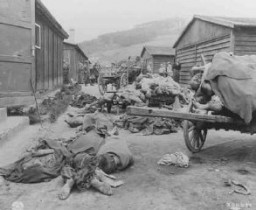
A pile of corpses in the newly liberated Dachau concentration camp. Dachau, Germany, April 29-May 1945. This image is among the commonly reproduced and distributed, and often extremely graphic, images of liberation. These photographs provided powerful documentation of the crimes of the Nazi era.
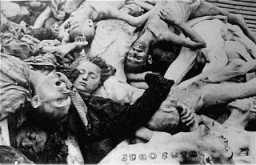
Piles of corpses, soon after the liberation of the Mauthausen camp. Austria, after May 5, 1945.
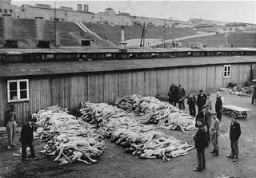
Corpses are piled in the crematorium mortuary in the newly liberated Dachau concentration camp. Dachau, Germany, May 1945. This image is among the commonly reproduced and distributed, and often extremely graphic, images of liberation. These photographs provided powerful documentation of the crimes of the Nazi era.
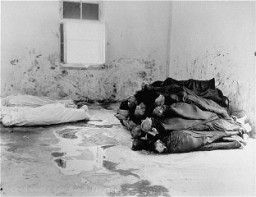
Corpses of inmates from the Klooga camp stacked for burning. Soviet troops discovered the bodies when they liberated the camp. Estonia, September 1944.
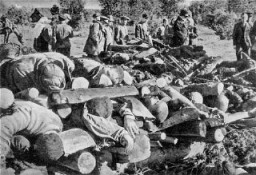
Corpses of inmates from the Klooga camp stacked for burning. Soviet troops discovered the bodies when they liberated the camp. Estonia, September 1944.
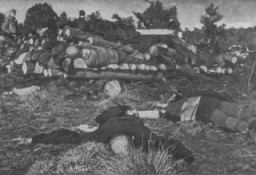
Corpses of prisoners killed in the Gunskirchen camp. Gunskirchen was one of the many subcamps of the Mauthausen camp. It was liberated by US forces in early May 1945. Gunskirchen, Austria, photo taken between May 6 and May 15, 1945.
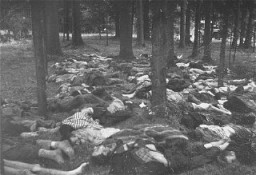
Corpses of inmates discovered by Soviet troops at the Klooga forced-labor camp. Nazi guards and Estonian collaborators had executed the prisoners and then stacked the bodies for burning. Estonia, September 1944.

American radio journalists view corpses in the Buchenwald concentration camp. This photograph was taken after the liberation of the camp. Germany, April 18, 1945. Pictured from left to right are, Lowell Thomas (NBC); Howard Barnes (WOR); and George Hamilton Combs (WHN).
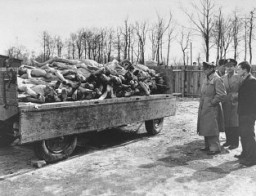
A counterfeit British bank note produced by Jewish forced laborers employed in Operation Bernhard at the Sachsenhausen concentration camp. Under an order issued by SS chief Heinrich Himmler in 1942, Operation Bernhard initially aimed to produce large quantities of counterfeit British bank notes. The goal was to flood the British currency market and trigger a financial crisis.
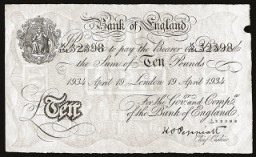
We would like to thank Crown Family Philanthropies, Abe and Ida Cooper Foundation, the Claims Conference, EVZ, and BMF for supporting the ongoing work to create content and resources for the Holocaust Encyclopedia. View the list of donor acknowledgement.